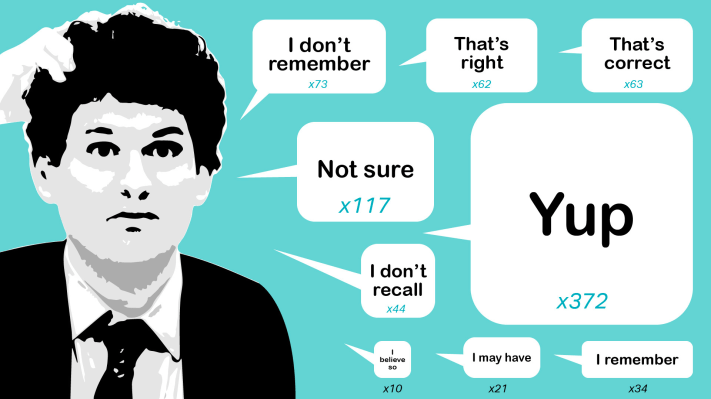[ad_1]

On Thursday, a federal decide sentenced former FTX CEO Sam Bankman-Fried to 25 years in prison after he was discovered responsible on seven costs of wire fraud and money-laundering.
The rip-off he pulled was pretty easy: He and his companions created an change, FTX, that took buyer deposits to spend money on and commerce cryptocurrencies. A few of these deposits had been secretly funneled to his different firm, hedge fund Alameda Analysis, which he’d initially created to arbitrage variations amongst crypto costs in varied international locations. In accordance with the federal government’s case, which it gained, Alameda used that cash for various things it shouldn’t have, like investing in different crypto startups, shopping for some very good actual property, supporting political campaigns and — most vital for functions of the rip-off — propping up FTX’s proprietary crypto token, FTT.
A couple of doc leaks and some clever work by journalists at Coindesk, mixed with a well-timed tweet by Changpeng “CZ” Zhao, who ran rival crypto change Binance, precipitated a run on FTX. The scheme unraveled in a matter of days, wiping out billions in buyer cash (though, apparently, they may get a fair portion of that money back). CZ himself is not operating Binance, having pleaded guilty to money-laundering violations associated to inadequate controls.
The sentencing brings to an finish the newest period of crypto, which was characterised by greater-fool get-rich-quick schemes on the best way up — traders had been lured in with guarantees of impossibly excessive returns on all the things from digitally watermarked photographs to easy curiosity funds on the token of the week — and fraud investigations and indictments on the best way down.
Crypto optimists like Andreessen-Horowitz’s Chris Dixon recommend that we’re now entering a more sober phase of crypto, the place software program builders will lastly construct helpful functions on one of many many blockchains which have emerged for the reason that authentic blockchain — the one underlying bitcoin — was first proposed by the pseudonymous Satoshi Nakamoto and distributed on Halloween 2008.
The issue with this standpoint is that builders have been constructing all kinds of functions on high of Ethereum and Solana and different Layer-1 blockchains for years now, and the one economically viable goal any of them have served is concept. Sure, it’s potential to create a digitally authenticated piece of artwork, however the worth of that artwork isn’t within the aesthetic pleasure it brings, however relatively within the chance that anyone else will purchase it for more cash later.
Almost all the things else that’s being constructed on or enabled by blockchains replaces one thing that’s already being performed pretty properly. Self-executing good contracts exchange — you realize, common contracts. Which aren’t excellent, however aren’t so ridiculously inefficient that they grind the financial system to a halt. Decentralized autonomous organizations, or DAOs, the place decision-making is shared equally amongst all members, replaces different decentralized organizational schemes characterised by hours of debate and few concrete choices, like holacracy or San Francisco Board of Supervisors’ meetings. Jokes apart, the place is the clear killer app for blockchains? The place’s the runaway success story?
Overlook runaway success: There hasn’t even been a single blockchain-based startup with sufficient cashflow or profitability to go public. Sure, there are bitcoin mining corporations like Riot. Sure, there are corporations that facilitate crypto trades like Coinbase and Block (previously Sq.). However there’s no precise firm that’s developed financial worth by doing one thing model new or higher on a blockchain.
I’m open to persuasion — pitch me, blockchain geniuses, with unbelievable value-creating startups! — however my view proper now’s that crypto will revert to the unique perform of Bitcoin as an alternative choice to nation-based currencies for storing and exchanging worth. Its volatility could not make sense to individuals residing in comparatively steady economies, however in international locations with runaway inflation, corrupt governance, civil unrest or battle, the tactic of changing collapsing native forex to bitcoin to stablecoin to a steady nationwide forex just like the U.S. greenback will stay an inexpensive and in-demand manner for individuals with some means to protect these means. It’s additionally helpful for sending remittances with out having to pay outrageous charges for worldwide cash changers, and — typically — as a digital alternative for suitcases of money for all types of underground financial exercise.
Why bitcoin as an alternative of one of many newer cash? As a result of these different cash are nearly universally primarily based on religion, belief and pixie mud; the primary worth they’ve is the worth they’re assigned by the individuals who maintain and commerce them. You can also make a school sophomore bong hit argument that each one cash is that manner, man, however in actual fact the U.S. greenback is backed by the large financial and navy energy of america: precise management over precise assets that folks really need and wish.
Bitcoin is equally backed by one thing actual and tangible: vitality. Due to its proof-of-work mannequin, the one approach to make and validate new bitcoins is by consuming vitality, whether or not it’s burning pure gasoline or hooking as much as a close-by nuclear plant. Power drives the real-world financial system, and except Sam Altman or anyone efficiently unlocks fusion and delivers vitality that’s actually “too cheap to meter,” it’s going to stay an actual asset with actual worth for a while. If demand for bitcoin had been to stabilize, the worth ought to theoretically observe to the worth of electrical energy. Actually, it wouldn’t shock me within the least if Satoshi had some type of connection to the vitality business.
[ad_2]
Source link




